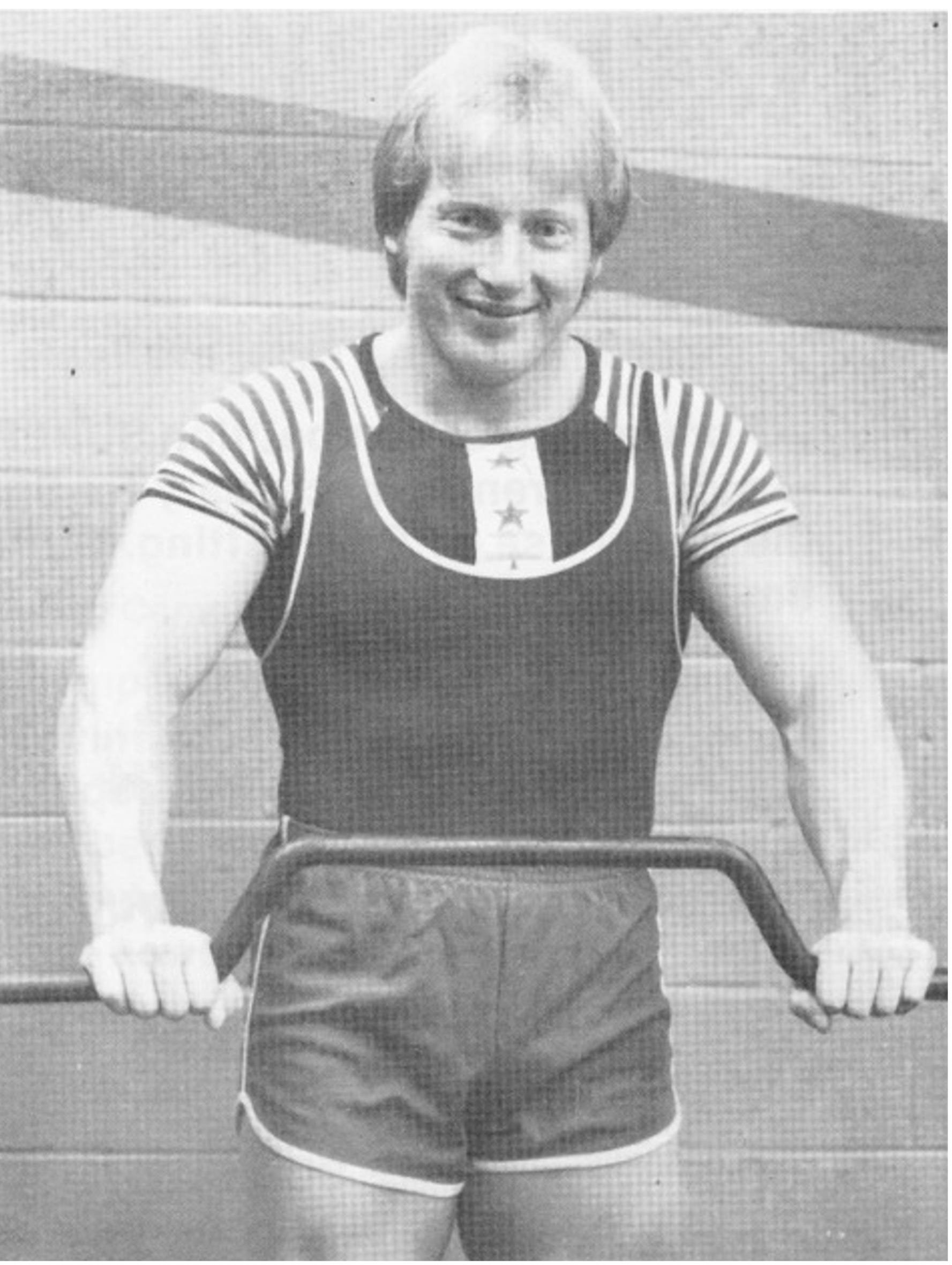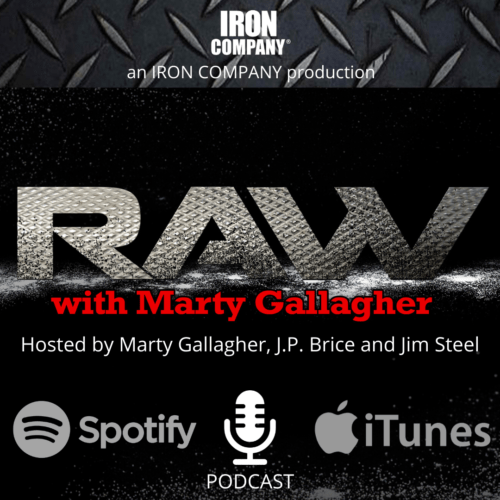
Bench Press Tips and Tricks of the Trade
Little bench press tips and tactics you may or may not know about
Does this look like the greatest bench presser in history!? Mike MacDonald (above) bench pressed 488 weighing 180, 523 weighing 198, 575 weighing 220 and 635 weighing 240. Here he weighs 200 and is shown with his cambered “MacDonald Bar.” Mike loved dumbbell bench pressing but dumbbells past 150 were rare and awkward. His solution was the bent bar that would duplicate dumbbell “pre-stretch.” Mike’s bar was the right idea engineered wrong: modern versions are gently sloped and more gradual.
I have been training partners with three men that bench pressed 600-pounds raw. I created a 600-pound raw bench presser and have trained with a dozen 500-pound + bench press maestros. I have interviewed and continue to interview the top bench pressers in the world about their training on a routine and regular basis. Over the years, I have accumulated a big bag of bench press tips and training trivia, bench press bits and pieces, different and unusual habits and tactics used by powerhouse raw bench press masters. At JP Brice’s urging, I quickly came up with ten bullet points about the bench press that likely might be news to regular trainees. Here are some “chocolate covered factoids” (Norman Mailer’s bon mot) about bench pressing, some may be news to you.
Ten Of The Best Bench Press Tips For Better Gains
- Bench Press Tip #1 - Why arch? why do elite bench pressers go to the time trouble and aggravation to establish an exaggerated spinal arch while they push bench reps? two reasons: an arch shortens the rep stroke and an arch turns the flat bench press into a decline bench press. Highly stylized bench pressers, particularly in the lighter weight classes, will obtain an extreme arch and combine it with a wide grip to dramatically shorten rep stroke. The decline bench press is significantly easier than flat bench pressing. There is, on average, a 10% performance difference between bench pressing lying “flat as a pancake” or benching with an excellent arch: a 295x1 flat-as-a-pancake bencher can handle 325 with a good arch. Over time a bencher becomes better at arching.
- Bench Press Tip #2 - Leg position and leg drive: many bench pressers will get up on their tippy toes while benching, this creates a more extreme arch, which is the object. Super technicians, like Ken Fantano, will set the feet forward of the knees and when the barbell need come off the chest, when eccentric becomes concentric, be it touch-and-go or pause, the bencher will send a jolt through the body. The jolt starts in the feet flat on the floor. The glutes, legs, lats, torso, and arms are already maximally flexed: the bencher jams his feet into the floor, sending a jolt from the feet, through the legs and glutes, on into torso. The jolt arrives at the chest and explodes the barbell off the chest. It all happens in a violent micro-second. The leg drive is the highest form of the bench press art, its the most sophisticated technique.
- Bench Press Tip #3 - The arc: elite benchers recognize that, unlike the squat and the deadlift, where the strongest muscles are at the end of the rep stroke, in the bench press, the weakest muscles (the triceps) finish the lift. In the bench press, the strongest muscles, the upper and lower pecs and front and side delts (with a nice assist from the triceps) start the concentric, the loaded phase. At the end of the bench press rep stroke, it is all triceps, the weakest of the pushing muscles. How do we aide the (relatively) weak triceps as they seek to lock out a rep? The bencher touches low on the chest and pushes up and back, arcing, thereby allowing the forearm/upper arm angle to open far easier. The “J path” allows the triceps to motor-pathway up and back, lessening tricep strain and developing momentum heading into the final 6-inches of a bench press when triceps flameout occurs.
- Bench Press Tip #4 - The coiled eccentric: it is hip in many bench press circles to “crash the negative,” allow the bench press bar to drop to the chest, not resisting the bench press rep during the negative, the lowering of the barbell to the chest. Why would a strength athlete throw away the muscle-building, strength-infusing benefits associated with the resisted negative? There is an art and science to creating the perfect negative rep in the bench press. The goal is to put the brakes on the barbell as it approaches the rising arched chest. Tension is increased in direct proportion to the barbell’s approach to the chest touch point, which is the highest arched point on the chest. Coiled tension is amplified as the barbell is paused on the chest or launched upward touch-and-go style. The perfect coiled negative makes the concentric leap off the chest on its arced path to lock-out.
- Bench Press Tip #5 - Differing grip widths are best: as Iron Guru, Huge Cassidy (the 1st superheavyweight world powerlifting champion) once noted, the best assistance exercise for any lift is the exercise that most closely resembles that lift. Ergo, the best exercise for the competition grip width paused bench press would be 1. The competition grip width done touch-and-go style (overload) or 2. More flat benches touch-and-go and paused – with differing barbell grip widths 3. Flat dumbbell benches. Then and only then do you get to incline barbell and dumbbell press. Therefore, dumbbell flyes are not a good bench press assistance exercise – yes, they strengthen the pecs but the technique is too different. Don’t be deluded, if your bench press is stuck and you want to get it moving, the solution is not adding sets of pec dec or Hammer Strength machine incline presses.
- Bench Press Tip #6 - Assistance exercises: arm work is extremely beneficial for bench pressing. Strengthening the triceps is best done with narrow grip bench presses, weighted dips, and single dumbbell tricep extensions. Big lats act as the braking muscles during the bench press negative and big lats act as the push platform during the concentric. Heavy sets of five reps in the barbell row are best done using the same grip width as the bench press. Strap up and build a big barbell row to aid the bench press. The overhead front press, 45-degree incline press, or behind-the-neck press are favored by elite benchers and usually done 2-3 days after bench pressing. Ed Coan swore by the press-behind-the-neck press and was capable of 350x5 and 400x1 weighing 220-pounds. Most top bench pressers will hit the bench press and triceps on day 1 and shoulders and biceps on day 2, 2-3 days later.
- Bench Press Tip #7 - Volume & Frequency pendulum: what is the bench press goal? No one trains to stay the same. Create a bench press goal. You need to be realistic. If you weigh 180-pounds and your current bench press capacity is 225-pounds for 1, 250x3 and 195x5, there is no way that you are going to push to 300x1 while staying at 180-pounds sporting your current body fat percentile. If the goal is to push the bench press upward, this need be synchronized with an appropriate nutritional regimen. Conversely, if the goal is to attain maximum leanness, you would be at cross-purposes trying to push strength upward in the face of ever-declining calories. Elite bench pressers will have periods of higher chest/shoulder/arm training volume, moderating the intensity, training lighter, faster more often. Volume phases are contrasted with periods of bar-bending power training.
- Bench Press Tip #8 - Eat your way through sticking points: there is nothing more Old School than this immortal Cassidy cliché. After a body-shattering power-training session, my training partners would descend as a unit on a nearby buffet. It was our normal routine to train hard and long and then immediately afterwards stuff our faces on steam table buffet food. This was followed by a bleary, half-awake car ride home. Upon arriving, we would collapse into a catatonic stupor as we power-napped. It is politically incorrect to sanction or condone this extreme training and gluttonous behavior followed by a selfish sleep trance – however for growing massive muscles, for creating power and strength, for forcing the body to the next level of physique and performance, this combination – blast the muscle, stuff the muscle, rest the muscle was – and remains – magical.
- Bench Press Tip #9 - Vary rep speeds for variety: purposefully varying the speed used to push a bench press and varying the rep speed used to lower a negative offer tremendous muscle growth and strengthening possibilities. Most beginner and intermediate level athletes do not give a second thought to the speed with which they push a weight while benching. Elite bench pressers have a default approach towards rep speed: a “slightly” slowed, controlled negative followed by an explosive (compensatory acceleration) concentric. There are three rep speeds to choose from before the commencement of every set: purposefully slowed, regular (or normal) and explosive. Use a purposefully slowed push phase to dig a deeper muscular inroad using less poundage and greater control. Rep speed variability is also used when handling dumbbells and doing bench assistance exercise.
- Bench Press Tip #10 - Programming: the classical twice a week power routine is a twice-a-week training split: squat and bench press (plus arms on day one) and 2-3 days later deadlift and perform heavy overhead front presses, or behind the neck presses, or incline presses, plus more arm work. A four-day power split would go: day 1, squat plus leg assistance exercises; day 2, bench press plus bench assistance exercises day 3, off; day 4, deadlift, back assistance exercises; day 5 overhead pressing or incline pressing plus arms; day 6 & 7, off. Take overhead pressing seriously: the flat bench press is enhanced by improvements in the overhead press or 45-degree incline press. Dumbbells are perfectly acceptable. Triceps and biceps are trained weekly. Switch out assistance exercises to keep things fresh. Pendulum swing back and forth between intensity and volume approaches.
About the Author
As an athlete Marty Gallagher is a national and world champion in Olympic lifting and powerlifting. He was a world champion team coach in 1991 and coached Black's Gym to five national team titles. He's also coached some of the strongest men on the planet including Kirk Karwoski when he completed his world record 1,003 lb. squat. Today he teaches the US Secret Service and Tier 1 Spec Ops on how to maximize their strength in minimal time. As a writer since 1978 he’s written for Powerlifting USA, Milo, Flex Magazine, Muscle & Fitness, Prime Fitness, Washington Post, Dragon Door and now IRON COMPANY. He’s also the author of multiple books including Purposeful Primitive, Strong Medicine, Ed Coan’s book “Coan, The Man, the Myth, the Method" and numerous others. Read the Marty Gallagher biography here.



